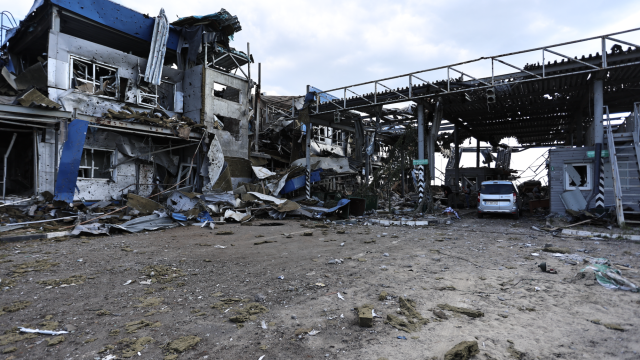
Svetlana Astakhova
CBSD Trainer
In 2010, the training and development market came back to life. As companies emerging from the crisis began to invest in training and development once again, they did so with more focus.
Companies seeking to invest in their employees follow three primary criteria: cost effectiveness, high levels of practical input, and concrete business solutions.
Training providers work in a competitive environment where pricing can be very competitive, so it is an easy solution for companies to look for the best pricing value. However, there are many instances where you get what you pay for, and companies should ensure that they are receiving high-quality services even when pricing is a key objective —
employee development is, after all, an investment.
To create high levels of practical input, companies are looking beyond the world of theory and focusing on areas of practice — putting actionable information into the hands of employees that can be immediately taken back to the workplace. Even in the classroom, employees should be working with real business situations as they apply the lessons being taught. It is always important to promote team building and to include some “info-tainment” in the training process to help shake off fatigue and open the employee to new ideas and new situations, but managers and employees have learned that training and development is not a break from work — it is actual work.
The impact of the crisis on the practicality of training is quite evident, and so is the attitude of the employees in the training experience. In some ways the crisis has done companies a favor and ensured that employees are focused on the business’s well-being, even in training. Participants are now more likely to arrive on time, to arrive prepared, to turn off cell phones and to participate actively, willing to share ideas and make mistakes. Having seen the absolute need for learning, change and growth during the crisis, employees have a stronger appreciation for development investment and so bring focus to their learning.
Practical, applied training works well when it provides actionable tools, a certain level of intensity, and comes close to the discomfort zone of those participating — all things that enhance the learning environment. Learning that provides a concrete business solution — the path to new processes, systems, responsibilities or the achievement of company goals — brings a reality to the training to ensure that the employee feels the need for change and growth.
When employees return from a theory-based training experience and try to apply their real business goals, it can create a lot of confusion, interrupting the business process. However, with well-designed, practical training and a great facilitator, employees can have a much more valuable experience where they apply the lesson with a concrete result in mind. By including business goals in the learning process, they begin solving their problems or applying a new idea right in the classroom, and create an immediate link between their training and the workplace. They will also have a deeper understanding of how to continue working with these new tools and processes thereafter.
Another positive trend in the “training and development” of employees is that companies are focusing more and more on the second half of the term: the development. Direct supervisors are more involved in coaching their employees and giving them the necessary levels of support, post-training, to ensure a steady growth of professionalism. Action plans and personal development plans are no longer just forms for HR; they have a value and meaning for the manager and for the employee. The practicality of training aids this by ensuring that action plans and development processes are truly actionable, not just theoretical goals.
Training is typically an event, or multiple events, meant to satisfy a particular business need. Development is an ongoing process. By involving service providers in the ongoing process of development and not just a single “training class,” companies are achieving far more value from their training investments and creating efficiencies through cohesive learning that can cascade throughout an organization —
solving key business problems or achieving large objectives through the planning of a company-wide development process. Development includes not just training classes, but also assessment, learning support, follow-up, coaching and mentoring. Companies that realize the importance of development for their business achieve better results.
Technology will factor more and more heavily in the delivery of training and development solutions for companies. With tightened travel budgets and a leaner work force, time away from the office can be costly and have high opportunity costs.
By enhancing face-to-face training and development processes with online delivery, companies can enhance learning over time and provide direct access to learning tools outside of the classroom. Learning management systems are used in many companies, enabling employees to reinforce classroom learning and learn independently when the need arises. It also allows employees to collaborate together on their learning in the virtual environment and allows companies to cascade new information directly to their employees for immediate use in the workplace.
The ultimate goal of training and development is to enhance the value of the business. Planning that investment in a focused way can ensure a strong return on investment and an enhanced competitive advantage. Training can be a “cost” that is quickly cut from a budget during lean times, but a well-planned training and development program can be a strategic investment that becomes an absolute necessity in a competitive marketplace.
A Message from The Moscow Times:
Dear readers,
We are facing unprecedented challenges. Russia's Prosecutor General's Office has designated The Moscow Times as an "undesirable" organization, criminalizing our work and putting our staff at risk of prosecution. This follows our earlier unjust labeling as a "foreign agent."
These actions are direct attempts to silence independent journalism in Russia. The authorities claim our work "discredits the decisions of the Russian leadership." We see things differently: we strive to provide accurate, unbiased reporting on Russia.
We, the journalists of The Moscow Times, refuse to be silenced. But to continue our work, we need your help.
Your support, no matter how small, makes a world of difference. If you can, please support us monthly starting from just $2. It's quick to set up, and every contribution makes a significant impact.
By supporting The Moscow Times, you're defending open, independent journalism in the face of repression. Thank you for standing with us.
Remind me later.





